How to Solve Linear Inequalities?
Inequalities are mathematical expressions in which both sides are not equal. In the following guide, you will learn more about linear inequality and solving it.
[include_netrun_products_block from-products="product/ged-math-workbook-comprehensive-math-practices-and-solutions-the-ultimate-test-prep-book-with-two-full-length-practice-tests/" product-list-class="bundle-products float-left" product-item-class="float-left" product-item-image-container-class="p-0 float-left" product-item-image-container-size="col-2" product-item-image-container-custom-style="" product-item-container-size="" product-item-add-to-cart-class="btn-accent btn-purchase-ajax" product-item-button-custom-url="{url}/?ajax-add-to-cart={id}" product-item-button-custom-url-if-not-salable="{productUrl} product-item-container-class="" product-item-element-order="image,title,purchase,price" product-item-title-size="" product-item-title-wrapper-size="col-10" product-item-title-tag="h3" product-item-title-class="mt-0" product-item-title-wrapper-class="float-left pr-0" product-item-price-size="" product-item-purchase-size="" product-item-purchase-wrapper-size="" product-item-price-wrapper-class="pr-0 float-left" product-item-price-wrapper-size="col-10" product-item-read-more-text="" product-item-add-to-cart-text="" product-item-add-to-cart-custom-attribute="title='Purchase this book with single click'" product-item-thumbnail-size="290-380" show-details="false" show-excerpt="false" paginate="false" lazy-load="true"]
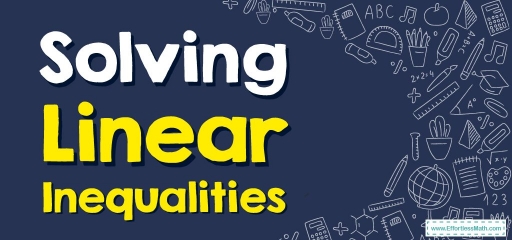
In inequality, unlike in equations, we compare two values. The equal sign in between is replaced by less than (or less than or equal to), greater than (or greater than or equal to), or not equal to sign.
Related Topics
A step-by-step guide to solving linear inequalities
Polynomial inequalities are inequalities that can be expressed as polynomials on one side and zeros on the other. There are many types of polynomial inequalities, but the most important are:
- Linear Inequalities
- Quadratic Inequalities
Solving linear inequalities
A linear inequality is an inequality that can be expressed by a linear expression on one side and a \(0\) on the other. Solving linear inequalities is like solving linear equations, but only the rules for solving inequalities must be observed.
Solving one-step inequalities
Consider an inequality of \(3x<6\). To solve it, just one step is enough to divide both sides by \(3\). Then we get \(x<2\). Therefore, the solution to the inequality is \(x < 2\) or \((-∞, 2)\).
Solving two-step inequalities
Consider an inequality \(-2x + 3> 6\). To solve this, we need two steps. The first step is subtracting \(3\) from both sides, which gives \(-2x > 3\). Then we need to divide both sides by \(-2\) and it results in \(x < -\frac{3}{2}\) (note that we have changed the sign of the inequality). So the solution of the inequality is \(x < -\frac{3}{2}\) or \((-∞, -\frac{3}{2})\).
Solving compound inequalities
Compound inequalities refer to the set of inequalities with either “and” or “or” in-between them. For solving inequalities, in this case, just solve each inequality independently and then find the final solution according to the following rules:
- The final solution is the intersection of the solutions of independent inequalities if we have “and” between them.
- The final solution is the union of the solutions of the independent inequalities if we have “or” between them.
Solving Linear Inequalities – Example 1:
Solve the compound inequality \(2x + 3< -5\) and \(x + 6 < 3\).
Solution:
By first inequality:
\(2x + 3 < -5\)
\(2x < -8\)
\(x < -4\)
Second inequality,
\(x + 6 < 3\)
\(x < -3\)
Since we have “and” between them, we have to find the intersection of the sets \(x< -4\) and \(x<-3\). Then the final solution is: \(x< -4\) or \((-∞, -4)\).
Exercises for Solving Linear Inequalities
Solve each inequality and write the answer in the interval notation.
- \(\color{blue}{-21< 2x+3\le17}\)
- \(\color{blue}{7x-5\ge 65\:or\:-3x-2\ge -2}\)
- \(\color{blue}{3x+1\le 3\:\:and\:-2x\le 6}\)
- \(\color{blue}{-20<\frac{1}{4}x+2\le 8}\)
- \(\color{blue}{(-12,7]}\)
- \(\color{blue}{(-\infty \:,\:0]\cup \:[10,\:\infty \:)}\)
- \(\color{blue}{\:\left[-3,\:\frac{2}{3}\right]}\)
- \(\color{blue}{\:(-88,\:24]}\)
Related to This Article
More math articles
- 6th Grade MCAS Math Practice Test Questions
- How to Find Modulus (Absolute Value) and Argument (Angle) of Complex Numbers?
- 8th Grade MEA Math Worksheets: FREE & Printable
- How to Solve Venn Diagrams and the Addition Rule?
- How to Master the Pythagorean Theorem and Right Triangles
- How to Calculate the Surface Area of Pyramids and Cones
- Geometry Puzzle – Critical Thinking 20
- How much does the CBEST Test Cost?
- Using Decimals and Fractions to Solve One-Step Equations
- Full-Length GED Math Practice Test













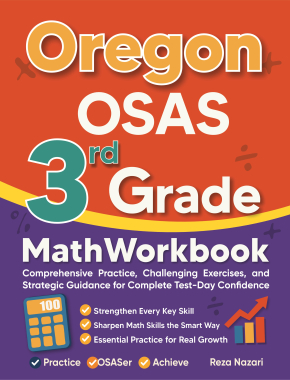
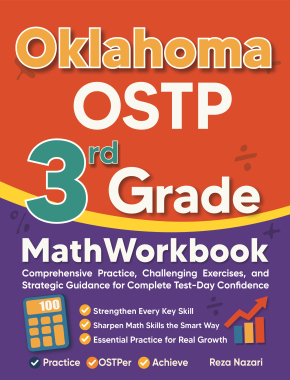



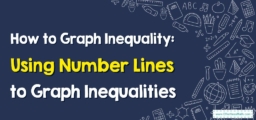

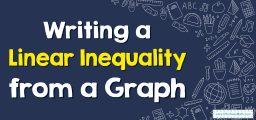
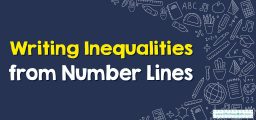
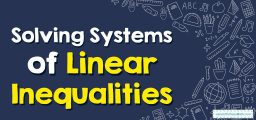
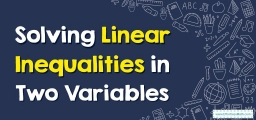
What people say about "How to Solve Linear Inequalities? - Effortless Math: We Help Students Learn to LOVE Mathematics"?
No one replied yet.